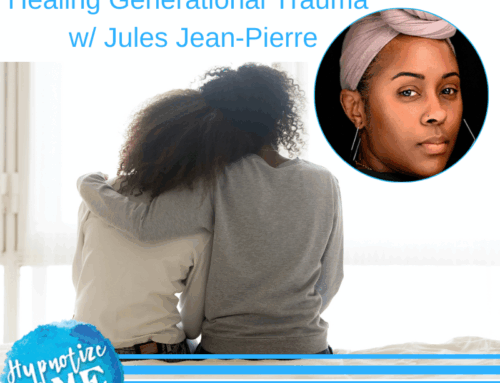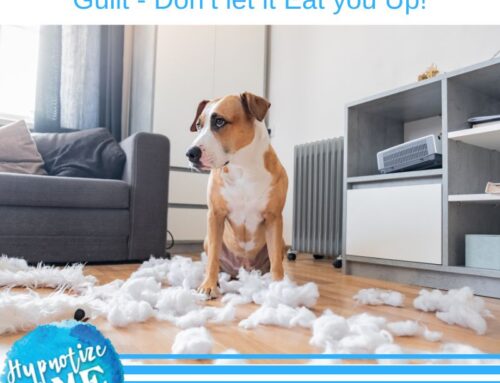OCD and You during Coronavirus!
 Pretty much everyone is feeling a little OCD right now! And many of us are confused about what to sanitize, where to sanitize, and when to sanitize! I wanted to share a great article I found. This is the first one I’ve seen that goes into the risk associated with doing different things and how that relates to when, what, and where you should sanitize.
Pretty much everyone is feeling a little OCD right now! And many of us are confused about what to sanitize, where to sanitize, and when to sanitize! I wanted to share a great article I found. This is the first one I’ve seen that goes into the risk associated with doing different things and how that relates to when, what, and where you should sanitize.
The article is not what you think! It’s not a scary pants “you should just stay home” type of article. In fact, it talks about how we all live with risk every single day.
As an Anxiety and OCD specialist, it’s one of the better articles I’ve seen. When I’m working with a client, we work on ways to reduce anxiety and OCD with “reasonable safety actions.” And to get more comfortable with uncertainty and living with “reasonable risk.” It’s hard to know right now what those are . . .
This article reviews just that and when and where you can actually relax and NOT worry!
I hope it helps you or someone you love! Please let me know if it does!
This was written by Peter Tippit, who gave permission to republish it here. Click on his name to see the original article on LinkedIn.
Saving Your Health, One Mask at a Time

Peter Tippett MD PhD
How does the average person decide what measures to follow unless they truly understand how these things work or have a clear set of “rules” they can abide by?
I am an Internal Medicine-certified, Emergency Room MD with a PhD in Biochemistry. I have also spent much of my professional life in the high-tech world helping people understand how risk, infection, and the growth of infection behaves. So I thought it might be helpful to folks in my network to explain how personal protection from a virus like SARS-CoV-2 (the formal name of the virus that causes COVID-19) actually works, how any given measure individually lowers risk, how various countermeasures work together, and most importantly, to give you some simple guidelines for day-to-day living in this new COVID world.
Bottom Line on Masks & Gloves:
- Wear a mask when you are in “exposure” zones (mainly places with other people).
- Treat your home, car, and yard as safe places (no mask or gloves).
- Be on high alert on what you are doing with your hands when you are in “danger zones.” This is when you must not touch your face.
- Consider wearing gloves (even winter gloves or work gloves can be helpful) but only for short periods of time and only when in “touch exposure” danger zones.
- Remove your gloves (and mask) when you return to your safe place.
- Wash your hands every single time you take off your gloves or mask or move from a danger zone back to a safe zone.
- When you are at home and after washing up, you can relax, scratch your nose, rub your eyes and floss your teeth…without worry.
Protections Work Together
All protections or countermeasures are only partially effective. For example, wearing the seat belt in your car reduces the likelihood of dying by about 50% compared with not wearing it. You can think about that as horrible (“it will fail half the time!”), or as great (“it cuts the risk of dying in half!”). For everything we care about, in all aspects of life, we solve this “risk” problem by using countermeasures together to improve their collective effectiveness. Independently, air bags reduce the risk of dying by about 30-40%. When added together with seatbelts, they are synergistic and reduce risk together by 65-70%. We add licensing, speed limits, anti-lock brakes, police enforcement and other things to achieve very good risk reduction (well into the upper 90s). We need to be even more careful when we drive in more dangerous situations, such as in a snowstorm. Protecting yourself (and society) from COVID works exactly the same way—you just can’t see the snow.
Getting Infected is Not “Black and White”
A tiny number of virus organisms placed in the back of a person’s throat one time is not likely to lead to the average person getting “sick” with COVID. If we placed a tiny number of live viruses in the throats of 1,000 people, less than half would probably get sick. If we placed 1,000 or 1,000,000 viral organisms, the average person probably would get sick. And if we placed a tiny number of organisms 10 or 100 times in a week, the average person would also likely get sick because of the multiple exposures. This is because even in your throat, your body has protective countermeasures such as mucus and cilia and your blood and other fluids likewise have generic immune and other protections. They are just not as strong as we need them to be. Even as people get and recover from COVID or get a future vaccine, 100% of the population won’t be 100% protected, but collectively we will be safe.
Your nose reduces the risk of viral particles getting to your throat. A mask reduces the risk of the viral particles getting to your nose, and social distancing reduces the risk of them getting to your mask. Together, these countermeasures work very well.
If your nose reduces the risk by 80% (see Caveat 1), and a mask by another 80% and the six-foot distance by 80% more, then collectively, the failure rate would be (0.2*0.2*0.2 = .008) = 0.8%. In other words, the collection of countermeasures would be (1 minus the failure rate) = over 99% effective in reducing your chances of getting sick. In this example, any two together would be 96% effective and any one alone would be 80% effective.
So based on this example calculation, if you are standing with your mouth closed and normally breathing close to a COVID carrier as they are speaking to you, you may have a 20% chance of getting sick from that exposure. Add a mask and that would go down to 4%, add distance and that goes to under 1%. Add repeated individual exposures from other people, and your risk gets worse. Add more countermeasures and your safety improves. The power of each individual countermeasure is much less important than their collective power in protecting you.
So How Does a Mask Really Work?
It hasn’t been measured for COVID, but I suspect that almost any mask, no matter how poor, is more effective than a seat belt is in your car. Masks that are FDA-cleared have been tested against a benchmark and have a rating. N95 masks have been shown to reduce 95% of passage of a certain size particle over a certain time period in specific laboratory conditions.
When I worked in a pre-COVID ER, I would change masks 6-12 times in a shift. However well it works in the test lab, wearing the same mask (N95 or not) for a 12-hour ER shift is definitely not as strong as using a fresh one—let alone using the same mask for a week. But it is far stronger than not wearing any mask at all. N95s have benefits over the simple dust masks typically used during construction work, for example, such as: (a) they are more comfortable to wear, (b) the air is more likely to go through the mask than around it, (c) exhaled air is less likely to fog your glasses, and (d) inhaled air is a bit less restricted.
These are similar characteristics to the beneficial properties of cloth masks. So, I am a big fan of cloth masks, even very simple ones. Any mask has 3 main protective properties:
- They make it hard to touch your nose and mouth, thus providing great protection for what is the biggest infection vector in most situations — hand-to-face transmission.
- They reduce the exposure of your nose and mouth to viruses in the ambient air (directly breathing in viral spray or viral fog).
- They reduce the chance that others will get infected from you when you are sick and don’t know it (and when you are sick and do know it!).
Great masks and poor masks can both stop water droplets. Most coughs and sneezes are really composed of a fine spray of water droplets soaked with virus. Stopping the droplets also stops the virus. Dry virus “dies” (see Caveat 2) very quickly so even though individual virus particles are extremely tiny and can enter in the air around a mask, or even go through the mask, they are less likely to infect you than a droplet teeming with viruses being kept “alive” by the droplet. The most likely way a dose of virus will get in your nose or mouth is:
- Via touch of your own hand (most likely by far)
- Via water droplet-laden virus (cough, sneeze or even breathing)
- Via free (or dry) virus “particles” (least worrisome)
The Nuance Behind Mask Testing
I’ve seen many articles that totally miss the mark on the benefits of masks. Many say things like “good to keep your germs from hurting others, but not very good at protecting yourself” or “we tested 1,2,3 layers of different materials and found x% of particles the size of viruses goes right through; therefore these are better than those”.
The testing that matters is way too difficult for anyone to actually do. It would test 1,000 people who wear “certified masks” versus 1,000 who wear homemade masks of different types and see what percentage of each get infected and what percent get hospitalized or die. Proving that virus-sized particles “go right through” old bandannas is mostly irrelevant if the most likely way you will get sick is by hand-face touching, where a bandanna might be 98% effective; or by virus-laden water droplets where the bandanna folded 4-times might be 90% effective; even though it is relatively poor at blocking dry, individual virus organisms, which is the least likely way you will get sick.
How and When You Are Likely to be Exposed
It is best to think of exposure scenarios. Scoring them relative to each other helps to illustrate the relative risk. (numbers are for illustrative purposes only)

Is a Hospital Mask Better Than Homemade?
In many respects, for home users, a mask made of cloth is comparable to a paper-based, certified medical mask. The first reason they are comparable is because the protection math works well whether the mask is 70% effective or 90% effective. In the example above, the total risk reduction would be somewhat better (99.6% vs 98.8%) between using a great mask and a good one when using it as part of a short list of countermeasures working together. That example math did not include other countermeasures you are likely to also use like washing your hands, or wearing glasses or a shield, or sometimes wearing gloves, or avoiding exposure in the first place. All of which would drive the total theoretical risk reduction well above 99% no matter which mask you wear.
First, countermeasures only work if you use them. If you keep a cloth mask in your pocket or purse or hanging around your neck, then when you get near a danger zone you will be more likely to use it. The N95 and similar masks don’t do well after being scrunched up in your pocket. Second, when you are back to your safe place, you can toss your cloth mask in the washing machine and use it again tomorrow. Or better yet, buy or make a couple of masks so one mask is always clean.
Treat masks like underwear: use a fresh one every day (and whenever things happen that make you want to change).
Cloth masks can be fitted, or folded, or worn as a bandanna. Two layers are much better than one, and three are somewhat better than two. Older cloth is likely to pass air better, making it easier to breath if you are wearing it tightly, which prevents air from escaping around the edges. If you are going to have air escape around the edges, arrange your mask so air escapes below your chin. Air turning more corners on the way to your nose makes it tougher for contaminated air to reach your nose, which improves protection.
Consider the inside of your mask as clean, and the outside as contaminated. When you remove it, you have just touched something contaminated so wash your hands, and then clean the mask as soon as it is practical.
Should I be Wearing Gloves, Too?
Wearing a mask uniformly reduces risk. Unfortunately, the case for non-medical people wearing gloves is much less clear because it can be totally useless. They become contaminated just as your hands do. Therefore, wearing gloves for long periods doesn’t help protect others. Both a contaminated glove and contaminated hand can pass a virus either way. If you handle money or touch a door that others will touch, you will both pick up the virus on your gloves and transfer it to the next object or person. If you touch your face wearing gloves, you will be just as likely to drive a virus to your eyes, nose or mouth as if you touched your face with an ungloved hand. Wearing gloves might help you avoid touching your face, but masks are much better for this.
Gloves are best for temporary situations in which you expect “touch exposure”. Use them, allow them to be contaminated, and when you are away from the touch exposure zone, take them off, wash your hands and get on with life.
So, use them for short periods of time for a specific purpose. For example, I recommend wearing gloves (and a mask) when you go to a store. Put them on when leaving your car, feel free to open doors, touch things, move things, with abandon, however, never touch your face when you are wearing gloves. Use them when paying, and when typing your pin or signing for your purchase. When you leave the store remove them and if they are disposable, throw them away. When you get to your car, open the door, clean your hands with your sanitizer or wipes, and go back to your safe zone.
My 90-something mother lives in an elder-care apartment complex. There are others there who have COVID. Her apartment is her safe zone. She wears a mask (just the sleeve from an old shirt) and winter gloves when she ventures into the hall and down the stairs to a common area to pick up her mail. She can hang on to the railings, punch buttons, open doors and breathe freely as she does her work outside of her safe zone. When she gets back to the apartment, she removes the mask and gloves, puts the mask in the wash (she has the others available if she needs a clean dry one), washes her hands and gets comfortable in her safe zone. By the way, the winter gloves will become un-contaminated over time as long as they are dry (see below), and they can be used again the next day since the inside is going to stay clean. If you really want to decontaminate them, they can be put in a 250-degree Fahrenheit oven for a half hour or set out in the sun.
What About Grocery Bags?
You can go crazy worrying about the bags and store items and packages you bring into your safe zone. In general, if they are dry, they are relatively safe. You can make them safer by letting them sit for an hour or more. Bright sunlight or dry air are both virus killers. Keep your hands away from your face while you are unpacking and wash your hands after you have finished putting things away, then consider yourself safe. No one is going to succeed at perfect sterile procedures in the real world, so make a routine that makes sense.
Hand Washing & Sanitizers
Wash or sanitize your hands whenever you enter your safe zone every single time, and when you finish working on things that have a chance of being contaminated. For example, if you are going to do the laundry, get everything loaded in the washing machine and then wash your hands. Same for unpacking the mail, or groceries, or an Amazon package delivery. While you are working on anything that is potentially contaminated, and every time you are in an unsafe environment, pay attention to your hands. When you are shopping or in other danger zones, it is not the time to scratch your nose or rub your eyes. And you should be wearing a mask anyway. Once you are back in your safe zone, wash up, and scratch your nose and rub your eyes all you want. You are in your safe place.
Washing with soap is better than using a sanitizer or wipes, but obviously you need a sink and soap for washing. Keep a pump or wipes in your car and at your home entrance to do a quick job on the way into your safe zones—mainly to keep your safe zone safe.
If you accidentally shake someone’s hand, or touch something worrisome, keep track of your hands, and keep them off of your face until you can wash or sanitize them. In some situations, you might consider letting one hand become contaminated while trying to keep the other relatively clean. You might use the same hand to open doors, for example and the other to do less dirty work until you can wash or sanitize them both.
But in general, if you are home or in another safe zone, quit worrying and don’t bother thinking about washing and face touching. No one can stay sterile for any extended length of time. Save those worries for shorter periods when you are in danger zones.
What about packages and mail delivered on the front porch?
SIDEBAR: Viruses are always dying. Viruses only “grow” (replicate making more viruses) when they are in the inside of an infected person (or a bat) cell. Everywhere else, they are dying. Depending on where they are and their local environment, they die quickly or they die slowly, but they constantly die. This is the big difference between viruses and bacteria. If you put a million viruses in a drop of water, they will start dying immediately. And there will never be more individual virus particles than you started with. Bacteria, on the other hand, can be in “standing water” with enough other environmental help to replicate and make a big, stinky, slimy mess. Just one or two bacteria double to 4, 8, 16, 32, 64, 128, 256, 512, 1024 eventually to millions of individual bacteria, in your soup, or milk, or pasta sauce, or whatever. Viruses never do this. Outside of the infected person they start dying and keep dying. We can take advantage of this fact to help keep us safe.
For those who think in exponential math, Viruses tend to die via a half-life. Just like bacteria grow exponentially in the soup, viruses grow exponentially in populations of people. Exponential growth is described with a “doubling time”. Similarly, exponential death is described as a “half-life”. Radioactive material has a constant, unchangeable half-life. The half-life for death of viruses, on the other hand, is a good property in the everyday world and is also easy to speed up, and easy to trust.
The half-life of virus particles might be a minute or two on a package on a dry warm day sitting in direct sunlight, or a half hour or more for the same package sitting in a cool humid environment like your basement. So, with these hypothetical numbers, for the package on the porch in the sun, ten half-lives kill off 99.9% of those virus particles in 20 minutes. The same package in your basement might need five hours to accomplish the same kill-off benefit. Sunlight (UV light), heat, dryness, soap, alcohol, peroxide, bleach all rapidly kill viruses.
So even if the outside of the box of Cheerios was contaminated a few hours ago by a sick shopper touching it, by the time you get it home, 99.9% of it is probably already dead, and by the time you eat breakfast tomorrow, after the box sitting in your dry cupboard, another 99.9% of it is likely dead.
Please don’t get sucked into breathless worry because the scientist who (correctly) shows that it is “possible” to find some live virus on cardboard after 2 days. Although true, the risk is infinitesimal. That scientist can find the last two living viruses, but you need a much bigger dose to cause any harm and, in most cases, that all went away yesterday.
But I work in a Grocery Store (or Warehouse)
Please wear a mask! Wear glasses instead of contacts. Wear something over your shirt or blouse that you can take off in the garage or other staging area before entering your safe zone car or home. Wear gloves or not (your employer probably has a requirement). Either way, wash your hands when you take your mask off and when you take your gloves off. When you quit work, wash before you get to your car. Take your outer layer off and gloves off before fully entering your car. Sanitize your hands on entering your car. Do it all over again in your garage or mudroom before getting inside your house. Put your clothes and mask in the wash and take a shower when you get home.
Key Takeaways
Social Distance—Stay six feet from people is a good thing. Ten feet is even better.
Safe Zone—For most folks, your house is a safe zone.
- For you, and for family living with you, your yard is likely a safe zone.
- When outside, and with no other people nearby, you are in a safe zone
- For most people, your car should be a safe zone.
Masks—The easiest, most reliable precaution you can take when out of your safe zone
- If you work with the public, you should absolutely be wearing a mask on the job.
- If you are in a safe place, a mask has low value, because the risk is already low.
- If you are going to put the same mask on and off, then treat the outside as contaminated and the inside as safe.
- If you handle the outside of your mask, then consider your hands as contaminated, and wash them.
- Don’t touch the inside of your mask with your hands or anything else dirty.
- Put the cloth mask in the laundry at least daily. (or wash with warm water and soap).
- Have at least two masks so one can be in the wash and the other clean when needed
- Don’t bother boiling masks before you wear them. The detergent in your washing machine is easier, stronger, and more likely to succeed by far.
And above all—enjoy your safe zone with your family, friends, cat or dog.
Be Well,
Peter
Caveat 1: I will use statistical examples and numbers to illustrate how this works. The numbers I use are estimates only. I am using them because the exact numbers in each case can be off by huge margins, and the resulting understanding, recommendations and behavior will not change even if a particular situation or study shows instances that are quite different from my examples.
Caveat 2: I know that viruses are not “alive” nor “dead” but I will use “dead” to mean that they are no longer capable of infecting anyone and “alive” to mean they still can.






